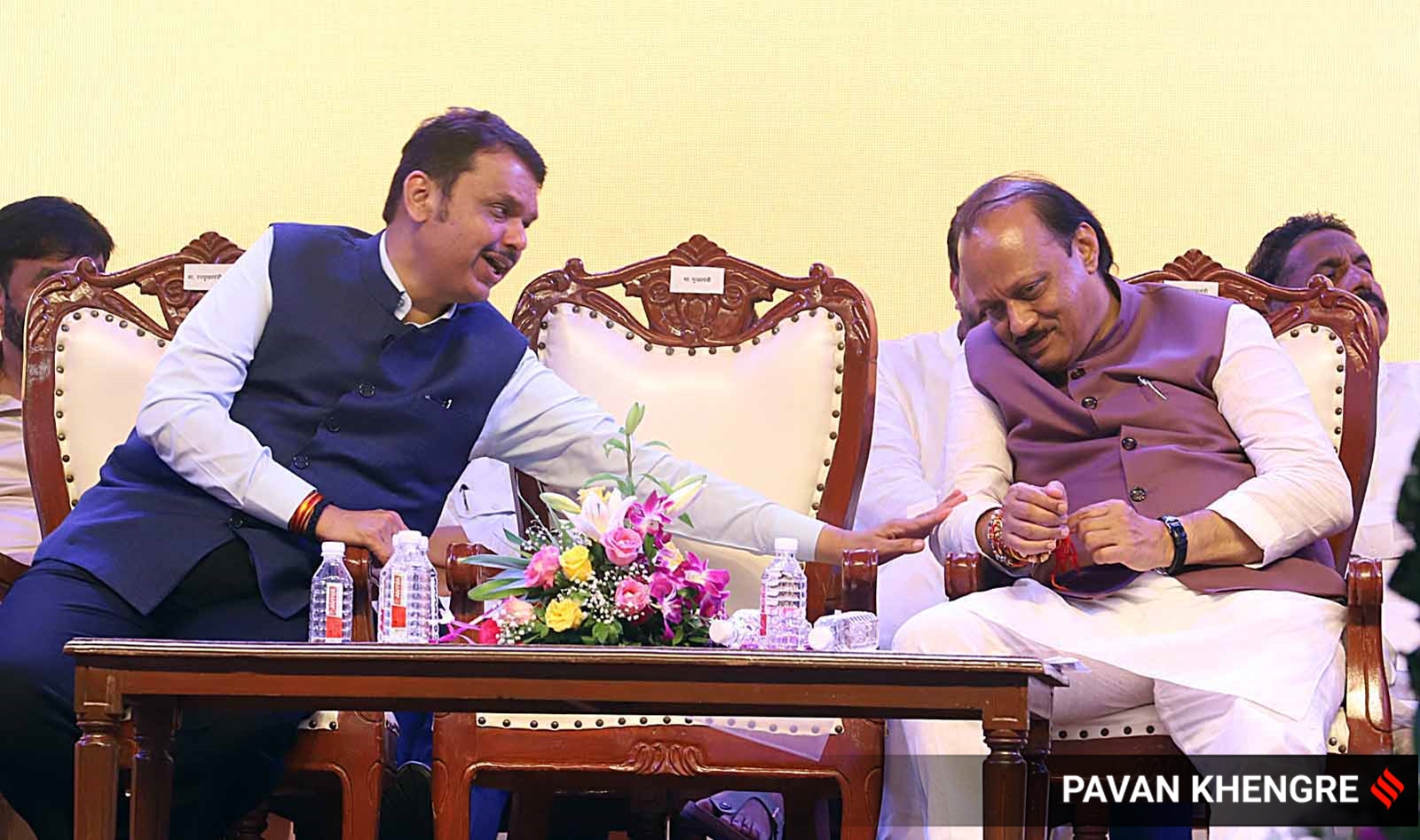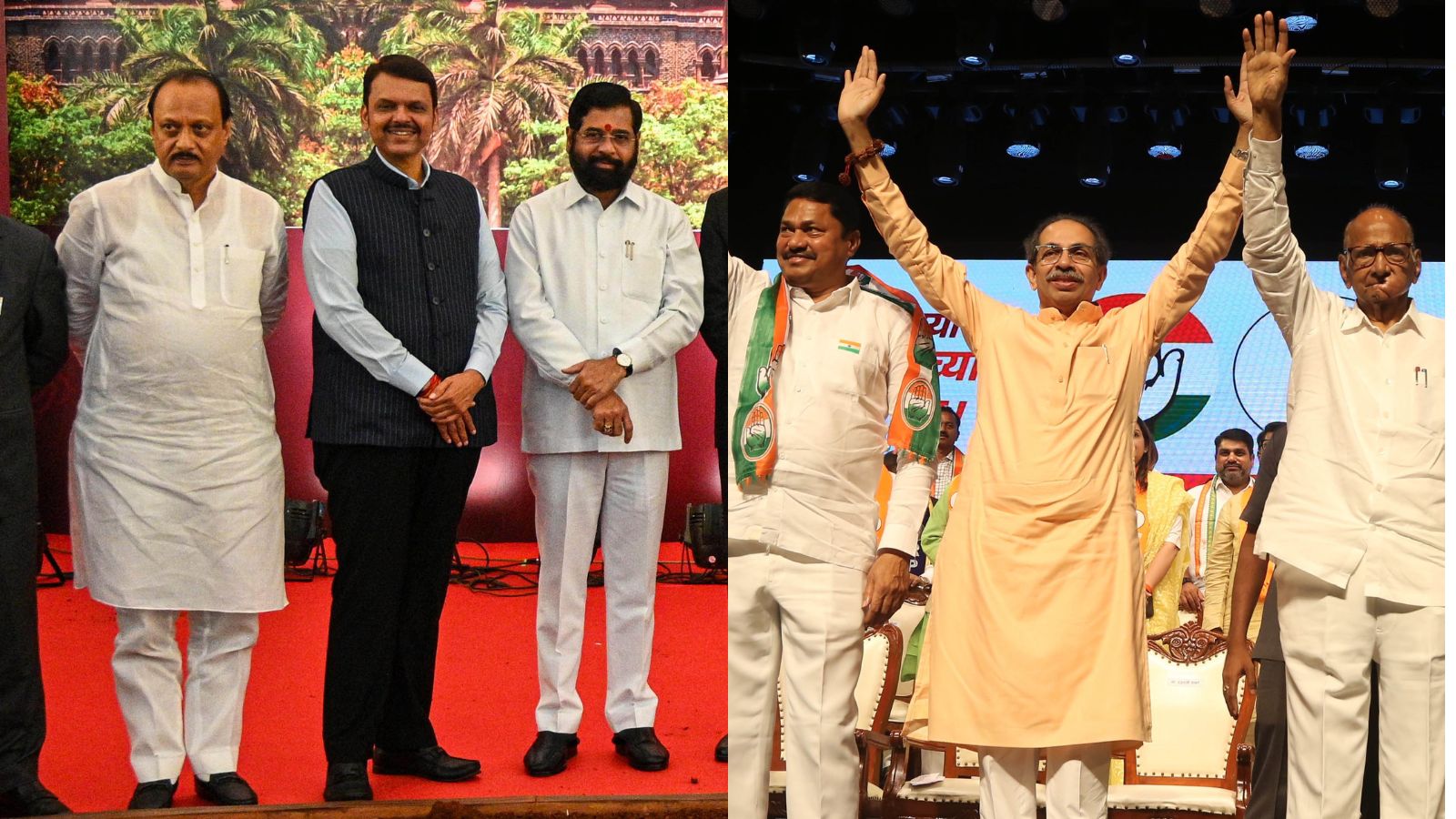Maharashtra is set to witness one of the most anticipated elections in recent history. Over the last five years, the state has experienced unprecedented political instability, with three different chief ministers, the split of two major regional parties and a lot of drama that has finally culminated into two unnatural and somewhat unstable alliances fighting it out for power in the upcoming elections to the state assembly.
At first glance, the 2024 Maharashtra Vidhan Sabha battle seems to be between two alliances: The Mahayuti, comprising the Bharatiya Janata Party (BJP), Shiv Sena (led by Eknath Shinde), Nationalist Congress Party (the Ajit Pawar faction) and other smaller allies, and the Maha Vikas Aghadi (MVA), which includes the Shiv Sena (the Uddhav Thackeray faction), the Nationalist Congress Party (the Sharadchandra Pawar faction), and the Indian National Congress. However, beneath this apparent bipolarity, there exists a complex web of competing interests and power tussles in both camps. Over the last few days, as parties are embroiled in seat-sharing negotiations and alliances to bury their disagreements, the election — less than a month away — would be a decisive factor in the future course of politics in the state. This article attempts to unpack some of the key contests and challenges before the parties and leaders in the upcoming polls.
MVA needs to up its game
To begin with, the MVA, which was at the peak of its popularity before the Lok Sabha elections, seems to be losing grip over popular sentiments. The UBT Sena and Congress-NCP effectively used the “gaddaar” (traitor) narrative throughout the Lok Sabha campaign and two prominent leaders — Uddhav Thackeray and Sharad Pawar — actively reached out to people across the length and breadth of the state. They spoke about issues that matter for a wide majority in the state, such as unemployment and agrarian crisis. The MVA specifically targeted the BJP’s strategy of gaining power at the cost of regional parties with a mix of tactics, from using the central machinery to creating rifts and fuelling vertical splits in parties. The Shiv Sena also carefully crafted the “Maharashtra Dharma” rhetoric and claimed that the BJP-led alliance was taking away important development projects from the state and giving them to Gujarat. This messaging worked effectively during the Lok Sabha elections and the Mahayuti only managed to score 17 of the 48 seats it contested.
The Mahayuti, however, has managed to diffuse this to a great extent over the last few months. It has rolled out several sops ahead of the polls that cater to a wide spectrum of the electorate — from the Mukhyamantri Majhi Ladki Bahin Yojana to revoking entry and exit tolls to Mumbai. Alongside this, Eknath Shinde’s Shiv Sena has used its clout to popularise a counter-narrative to that of the Thackerays, by using a variety of communication platforms. For instance, it has been sending IVR messages that start with “as you know, Uddhav Thackeray has taken a U-turn on Balasaheb’s Hindutva ideology by joining hands with the Congress.” Similarly, the Marathi film Dharamveer and its sequel, which celebrate the bravado of former Sena leader Anand Dighe, have been systematically used to glorify Shinde as the “real sainik”.
All may not be well within the Mahayuti
Despite its outward show of strength, the Mahayuti faces internal friction. Ideological differences have surfaced, particularly after Ajit Pawar’s entry. Ajit, with his rhetoric centred around the ideals of Shahu, Phule, and Ambedkar, contrasts sharply with the Hindutva ideologies of Shinde and the BJP. NCP insiders have suggested that his attempt to woo the Muslim voters through Nawab Malik and Zeeshan Siddique is being cautiously kept in check by the BJP leadership. This ideological incoherence could alienate the BJP’s core supporters, who value ideological purity. Also, unlike Eknath Shinde, Ajit Pawar seems to be somewhat weak in keeping his flock together. While Shinde made efforts to shield those who joined him in his rebellion, Pawar struggled to replicate that success.


The race for the Chief Minister’s chair further complicates the Mahayuti’s unity. Eknath Shinde and Devendra Fadnavis both have strong ambitions for the top post. Ajit Pawar, too, has long yearned for it. The struggle over leadership is also reflected in the issue of seat-sharing, where tensions have surfaced, particularly in key constituencies like Thane and Kalyan. BJP’s attempts to assert its dominance have irked the Shinde faction, and Ajit Pawar’s faction appears weak in the negotiations due to its poor performance in the recent Lok Sabha elections. There is also a race among the three alliance partners in the Mahayuti to claim credit for their populist policies.
MNS, Vanchit Bahujan Aghadi, and the Jarange-Patil factor
Beyond the two major alliances, smaller parties and leaders could lead to vote-cutting and swing votes in this election. Raj Thackeray’s Maharashtra Navnirman Sena (MNS), though weakened, still holds sway among some urban voters, particularly the Marathi youth. His ability to attract voters away from Uddhav Thackeray’s Shiv Sena could indirectly benefit the BJP-led Mahayuti. The Mahim seat, in particular, where he has decided to field his son Amit and launch him into electoral politics, may see a tough multi-cornered fight.
Prakash Ambedkar’s Vanchit Bahujan Aghadi (VBA), too, remains a wildcard. Despite his inconsistent electoral performances, Ambedkar continues to search for a cohesive vote bank. His ability to fragment the Dalit votes could play a pivotal role, especially in constituencies where the margins are really narrow. Historically, VBA’s political fluctuations have been seen as aiding the BJP.
The Maratha agitation, led by Manoj Jarange-Patil, adds yet another layer of complexity. The demand for Maratha reservations could impact voting patterns across Maharashtra, particularly in the Marathwada region.
Real issues ignored
The upcoming Maharashtra elections will be a litmus test not only for the political future of its key players but also for the strength of democracy in the state. The complex web of alliances, ideological contradictions, and leadership tussles threatens to overshadow the real issues that voters care about — unemployment, agrarian distress and droughts, the impact of climate change, and issues of law and order, to name a few. With each faction scrambling for short-term gains, the electorate is left grappling with confusion, making it increasingly difficult to choose leaders based on substantive policies rather than opportunistic rhetoric.
At the heart of this electoral contest lies a deeper challenge for the future of alliance politics in India. The uneasy coalitions and frequent realignments reflect the fragility of ideological consistency in pursuit of power. In such a fractured landscape, the risk is that democracy itself becomes diluted as parties only seem to be prioritising political survival over governance. For Maharashtra’s 112 million people, the stakes in this election go beyond choosing a government; they are about whether the system can still deliver on its promises to the ordinary citizen amidst the chaos of alliances and leadership battles.
The writer is a Mumbai-based researcher who works on Maharashtra Politics and Urban Informality. His doctoral work looks at the journey of Shiv Sena between 1985 and 2022


